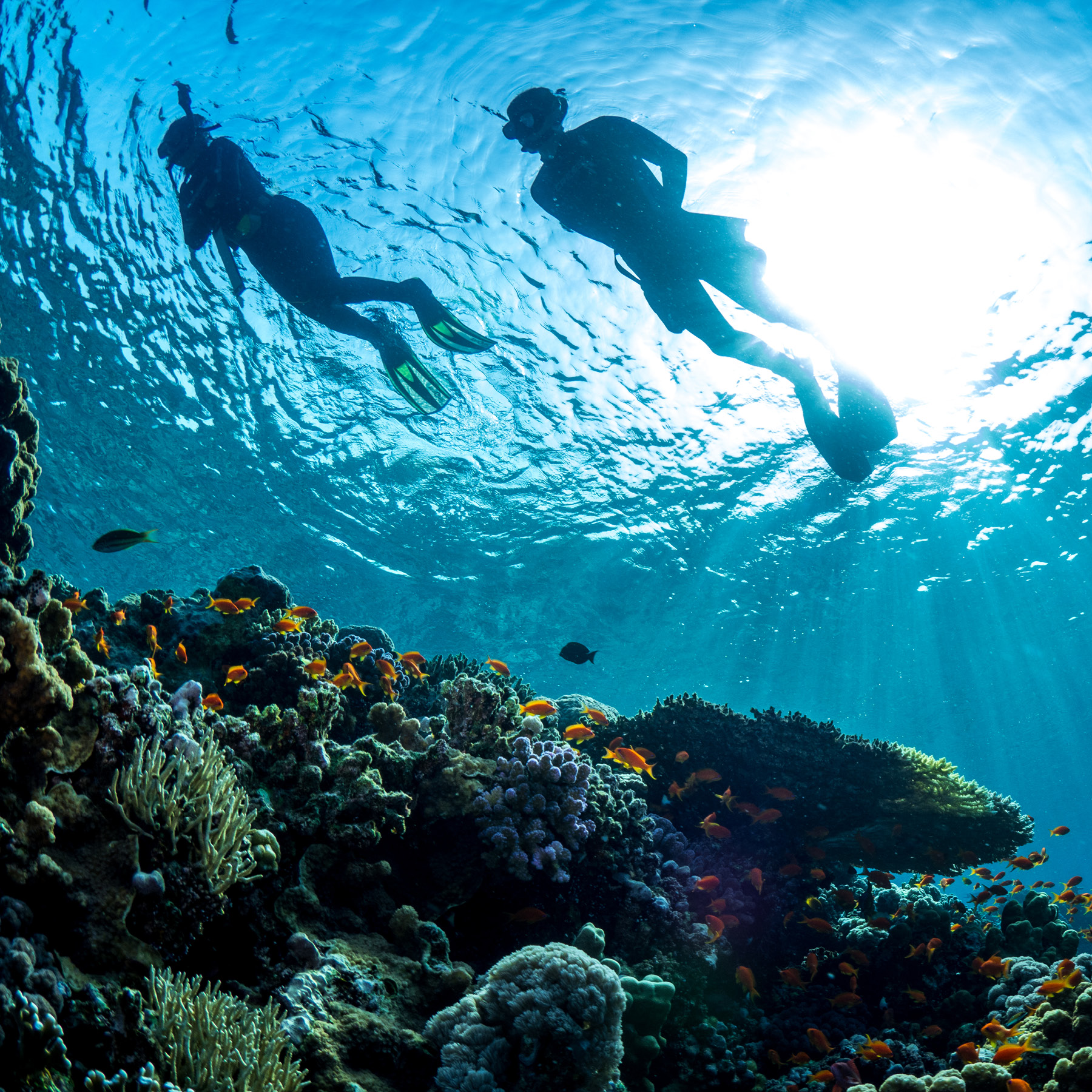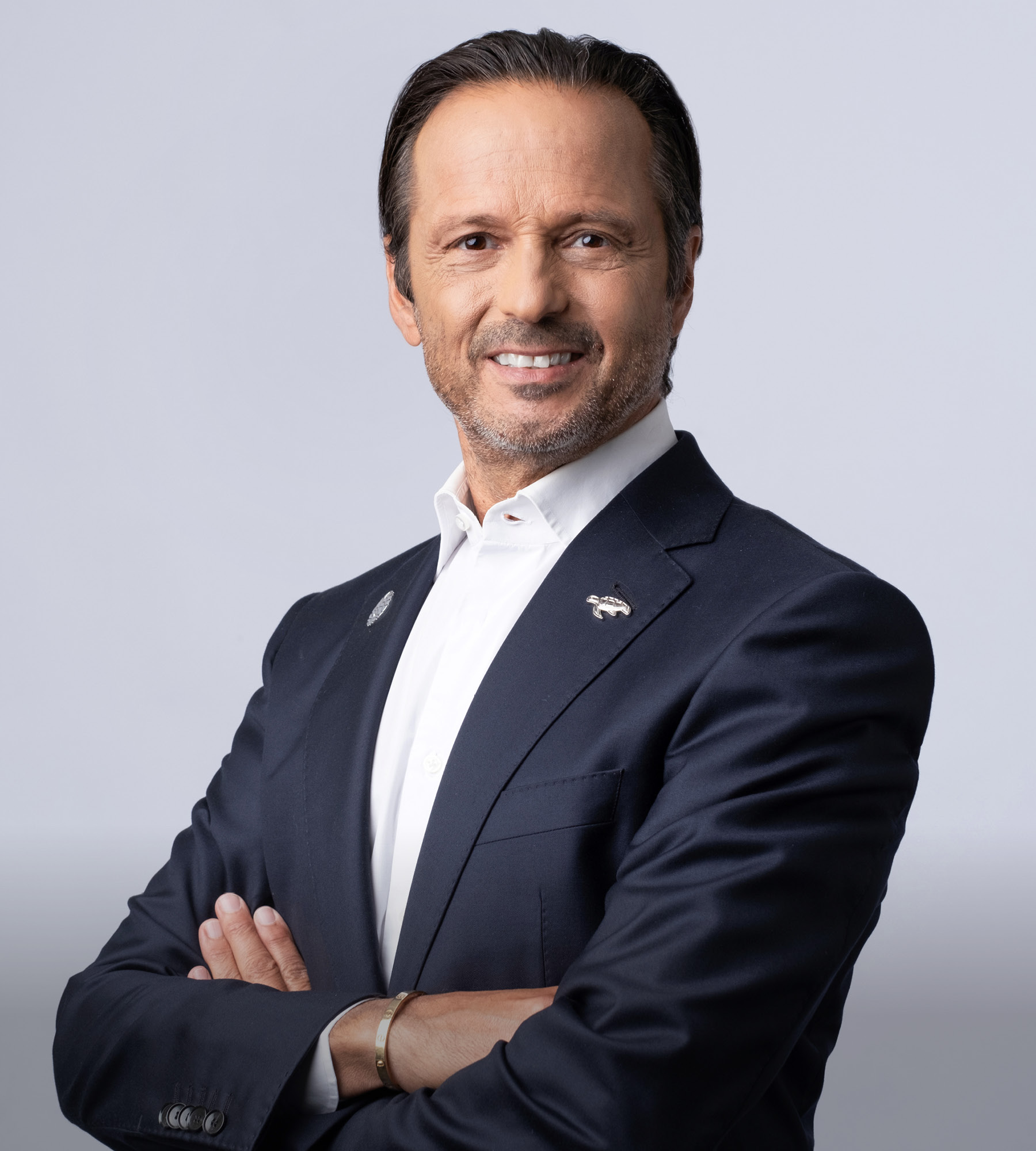Language
You can read the magazine in one of the following languages
Listening to John Pagano wax lyrical about Saudi Arabia’s Red Sea Project, you’d be forgiven for thinking the word ‘impossible’ doesn’t exist in the native vernacular.
A cursory skim of the venture’s headline figures reveals a luxury tourism enterprise of mind-boggling ambition: 50 hotel resorts across 22 islands and several inland locations, within an area of 28,000 square kilometers; 8,000 rooms and more than 1,000 residential properties; 120,000 new jobs created by Red Sea and AMAALA, 60,000 of those direct; a long-term contribution of US$8 to US$10 billion to gross domestic product; and a contribution to the uptick in tourism’s offering to the Saudi economy from three-to-10 percent.

To even refer to it as a ‘project’ seems to downplay its pomp. Projects are what students do for science homework, or what DIY enthusiasts call a kitchen renovation. The Red Sea Project is more akin to terraforming: a complete, grandiose overhaul of the landscape for the improvement of humankind and – here’s the kicker – the regional ecosystem.
‘For People and Planet’, reads the homepage slogan on the company’s website.

“We created the narrative around regenerative development and regenerative tourism. I’m proud to say we were the first to embrace that.”
“What’s happening is truly remarkable,” says Pagano, the Canadian-born Group CEO of Red Sea Global, the company spearheading the endeavor. “It’s on a scale that’s unprecedented and unlikely to be repeated ever again, because it’s hard to imagine a situation where you get different dynamics coming together in leadership, and a willingness to move a country from one era to the next in a relatively short space of time.
“When I joined back in 2018, there was a particular path that the organization was taking, which was not dissimilar to the path most take in this region, which is assembling large teams of consultants and project management consultants to deliver these projects. I looked at it and said, ‘Hang on a second, this is a generational product, a once-in-a-lifetime opportunity for the Kingdom and its people.’
“So why not build an organization that will become a national champion, an integrated real estate company that retains the knowledge and then transfers that knowledge to the Saudi population? One that will endure and go way beyond the Red Sea Project?”
Slated for 2030 completion, the mission is already taking shape. Last year saw the ribbon cut on the first two resorts, Six Senses Southern Dunes and the St. Regis Red Sea Resort, upon which football superstar Cristiano Ronaldo has bestowed his patronage, sharing the experience with his more than 628 million Instagram followers. Three are now open and two more are expected to roll out in 2024, with Nujuma, a Ritz-Carlton Reserve, now accepting bookings.
The dedicated state-of-the-art Red Sea International Airport, operated by daa International, is also welcoming international flights, via a connection from Dubai.
What’s more, the Red Sea Project complements the wider mood music that’s currently playing across Saudi Arabia, thrumming alongside other ‘giga projects’ such as The Line, the country’s revolutionary car-free linear smart city, and Qiddiya, a Goliath of an entertainment and tourism complex, which plans to host a Formula One racing circuit among other landmark facilities.
Both ventures feed into the highly publicized Saudi Vision 2030 program, a push – under the aegis of the government’s Public Investment Fund – to diversify the Saudi Arabian economy, away from an over-reliance on oil production.
“The deep historic and cultural significance of Saudi Arabia is going to play well with the customers we hope to attract,” Pagano says of a client base that is tipped to reach a capped one million visitors a year.
“Especially international travelers who are going to come to the region for the first time and have their eyes opened up to what an amazing place Saudi Arabia actually is.”

“The deep historic and cultural significance of Saudi Arabia is going to play well with the customers we hope to attract.”
In an era characterized by rapacious hit-and-run tourism development, where omnipotent corporations plunder (often impoverished) regions with scant regard for the social fallout, it would have been easy, and depressingly predictable, for Pagano and his team to put profits before people in their quest to create one of the world’s most desirable destinations.
But this is not a project that has trod the predictable route, in any shape or form.
“For far too long and far too often, development has excluded the local communities,” Pagano says. “They exploited them, they took their livelihoods. That’s not a sustainable approach. Right from the very beginning, we engaged with our local communities. We wanted to take them on the journey with us. We wanted them to benefit positively, be it financially or through employment possibilities.”
Initiatives already kick-started include reanimating the regional souk culture, letting artisans set up shop rent-free at Red Sea Project resorts – as is happening right now at Six Senses Southern Dunes – and offering English language training to the native population. There’s a chance they’ll be taught the meaning of ‘impossible’, but it’s doubtful.
“We do simple things,” Pagano says. “We’ve created a co-op with several thousand local farmers to help teach them sustainable farming techniques and guide them toward the products we’re going to consume within our destinations.”
Perhaps mindful of the devastation trail left by projects much smaller than the Red Sea Project – the Amazon rainforest and Australia’s Great Barrier Reef being prime examples of regions that now bear the bruises of heavy-footed development – Pagano set out not only to tread lightly upon the area’s delicate oceans, corals and sand dunes, but to also pioneer a new style of tourism expansion that puts its faith in innovative, sustainable technologies.
In one breath, the ever-spirited Pagano is enthusing about the Project’s 100 percent renewable, 24-hour-a-day solar panel system that avoids connecting to the electricity grid; in the next, he’s riffing on the very real possibility of scaling super-clean hydrogen fuel to move heavy vehicles across the development.
Also in the pipeline are plans to manufacture and deploy lightweight electric Vertical Take-Off and Landing aircraft, or use robots and AI to map the Red Sea’s coral reefs more efficiently than any human diver ever could.
“You’ll often hear me talk about regeneration,” he says. “We created the narrative around regenerative development and regenerative tourism. I’m proud to say we were the first to embrace that. Now everybody’s talking about it.
“I saw this as a unique opportunity for us to shift away from just simply sustaining and maintaining the status quo – which is what sustainability is about – to looking at how to make the place better. How do I use development as a force for good? How do I use tourism to value and protect and enhance our environment?”
Spend a few minutes perusing images of the already or soon-to-be operational Red Sea Project destinations and it’s clear that the atomic dedication to preserving the regional ecosystem has not blurred the company’s focus on high-end travel. Luxury is still the name of the game here, a fact reflected in the caliber of architectural talent recruited.
Take the St. Regis Red Sea’s curve-roofed overwater villas that peer over pristine corals, designed by the coveted Japanese architect Kengo Kuma; or the arresting, shell-inspired accommodation at Nujuma, a Ritz-Carlton Reserve, crafted by the world-renowned Foster + Partners agency; or Killa Design’s reflective stainless-steel orbs that form part of the sci-fi aesthetic at Sherbara Hotel.
Big names, with big ideas.

“For far too long and far too often, development has excluded the local communities.”
Even so, Pagano stresses that the Red Sea Project shied away from solely awarding mega contracts to entrenched global giants, instead opening the supply chain to small and medium-size businesses, too.
“The reason we did that was, first, to secure the supply chain. But to also build these long-standing partnerships and help these businesses to grow with us, because this is a long journey. This is a marathon. It’s not a sprint,” he says.
“Although we operate as a private sector entity, we’re ultimately owned by the Public Investment Fund, but I’m given the freedom to take longer-term positions to really use Red Sea Global as a beacon for others in the world to follow. I want to show the world how we can develop better, how we can develop in harmony with our environments instead of at the expense of nature.”
When John Pagano holds court, you get the feeling that anything is possible.

